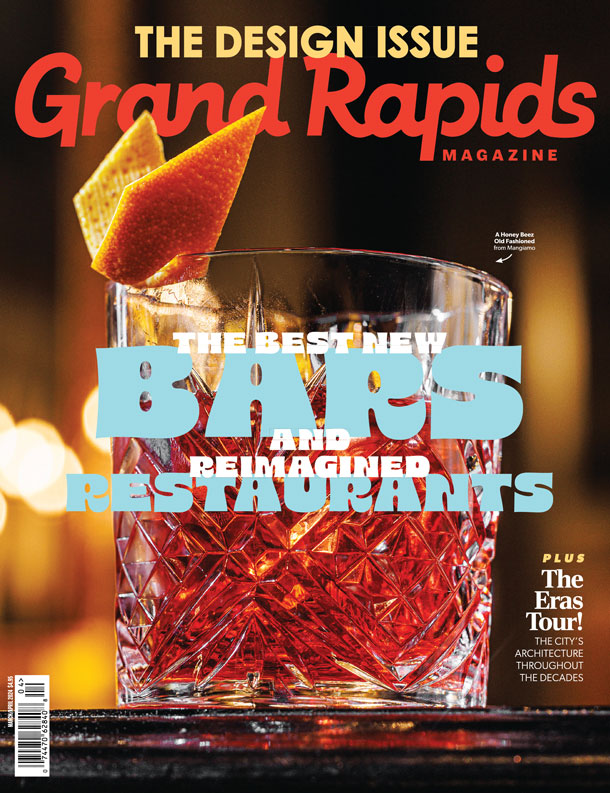There’s an argument that Woodford Reserve is one of the first true craft distilleries.
Sure, it’s part of the Brown-Forman family of spirits, and it’s made on a site where distilling started in 1812 in a building that’s a National Historic Landmark. But the brand was launched in 1996 and has helped push the Kentucky bourbon industry beyond its traditional parameters.
And leading the charge now is Chris Morris, the brand’s second master distiller who’s been with the brand since the beginning and with Brown-Forman since 1976.
According to his bio, Morris is “responsible for creating the world’s first bourbon finished in Chardonnay and Pinor Noir barrels,” and according to a recent chat with New Holland Brewing founder Brett VanderKamp, he’s a key cog in pushing for more descriptive language in the American distilling industry.
I used that fun tidbit to launch into conversation with Morris this week.
This interview was edited for clarity.
Pat: In a recent conversation for Drinks with Pat, you were actually brought up in reference to your pushing to better convey nuances and taste in spirits a long time ago. Do you feel the industry has evolved in that sense?
Chris: I love this question. Going back to 1992, I had been traveling abroad and had been to Scotland and exposed to single malt scotches. They had taste descriptors. It’s like a bottle of wine telling the consumer what they taste like. Bourbon never did that — no taste notes or language. It was smooth or mellow — that was as far as the descriptor got.
I introduced to the industry in 1992 … the flavor wheel. It was all because, if bourbon was going to become anything, it had to be like single-malt scotch. I was ridiculed by some, but of course, soon they started to use it, and off we go.
It’s gone to the extreme now. It’s gone crazy. Now, you see flavor notes that are 1,000 words. They’re novels. And I’ve been going the opposite way to be more concise. I think they read these notes.
Early notes were brief. Now, people are intimidated by them. So we have to go back to the basics. Instead of 33 different spice notes, we can say it’s moderately spicy. I think the industry is way beyond where it should have gone.
Pat: The reason we’re talking is the release of the Batch Proof 118.4 bourbon. Tell me about that process.
Chris: Batch Proof is really a response to consumer demand. There is a segment of consumers who liked high-proof of any kind and we didn’t have any. I frowned upon it out of concern for responsible use, but if anyone is paying $130 for that, it is a responsible audience not a young college kid. That gave us our own permission to do this.
It’s a great illustration of how we put together our product, every model of Woodford is through batching. We want our favorite products to taste the same bottle after bottle. Consistency is key.
To do that, we batch a great number of barrels together, about 120-140 barrels. We also have that flavor target, so we put barrels together of different production dates, different warehouses, and we build what we hope is that flavor on a consistent basis. When you put them together, they’re very high-proof without any water. At that proof it can’t taste just like Woodford Reserve is at 90.4, what we normally bottle it at, it’s very hot, a lot of octane in that batch sample, so the next thing we do is add our water to reduce it to 94 proof, then we can say this tastes great, or it needs some more spice or vanilla. So now, we tweak the batch that should make the flavor profile where we wanted — just a few barrels — the proof will rise just marginally and then we finish adding water to get 90.4 proof.
So, batch proof is whatever that batch is before diluting it, whether it’s 118.4, 123.2 whatever it happens to be. So, most likely, if anyone is cutting precisely to 90.4, it probably won’t taste exactly like their favorite glass of Woodford Reserve.
Pat: Going back to that first question, how do you think the industry has changed in your time? What do you think of people collecting whiskies, rather than drinking them?
Chris: There weren’t whiskey collectors when I started in the business, none of these unicorns and that kind of stuff. You did what the distiller expected, you bought a bottle and you drank it, then bought another one.
I don’t collect whiskey … just because it’s my business. I’ll have the first bottle of Woodford Double Oaked, a bottle of this or that, but I have those because it’s like photographic scrapbook. I have one bottle, one bottle of first Batch Proof. All the others I drink them.
I don’t understand why they don’t drink the whiskey. That’s what it’s been created for. Having them as investments, I can’t even comment on that, because sometimes a bottle might break, or a seal is compromised, and this … bottle is no longer valuable.
Pat: And what about the growth of the craft distilling industry?
Chris: I remember when the American Distilling Institute was formed, and the first meeting and convention was in Louisville or Southern Indiana. We could host all the attendees at Woodford, and it was like 40 people. Then, they grew, and we couldn’t do that.
We believe we were pretty much at the front end of craft, and now so many famous distillers would come, and we were like free consultants. Then, we realized we’re creating competition for ourselves. But it’s been extremely valuable to the industry in general and the historic bourbon industry. Until the craft movement was gaining momentum, we didn’t have a lot of friends in Washington, only a few states with lawmakers representing the industry, and there always seemed to be a threat in some form — taxation or whatever the case may be.
Now, every state has distilleries. That has really helped our industry. Plus markets and consumers who might not be whiskey drinkers from a traditional market now have local whiskies, and that means maybe they’ll expand and try some stuff from Kentucky. It’s broadened our approach and the appeal I love to create.
Sunday Tequila Day
Approximately 50 brands reached out to me to let me know Aug. 24 is Tequila Day (another one of these incredible holidays). It should be noted tequila sales were up 63% in the first of the year, according to the Distilled Spirits Council.
That stat might help explain why so many celebrities have entered the tequila business — or why those sales are surging. Just look at George Clooney selling his brand, Casamigos, for up to $1 billion.
Let’s take a look at a couple of the fun ones to seek out — serve them up on the rocks, maybe with some tonic and lime or maybe in a margarita.
Former Detroit Red Wing Chris Chelios has his tequila, El Bandido Yankee, at multiple GR bars, including Social House, Garage Bar and Taco Borracho.
If you’re perusing a Costco or liquor store, you might get lucky and see Aaron Paul and Bryan Cranston tasting their Dos Hombres Mezcal.
LeBron James’ tequila, Lobos 1707, is pushing the Joven style, which is a blanco tequila mixed with a touch of reposado tequila.
George Strait’s brand, 1530 Codigo has a fun run of cocktails, so check below.
Mango Mezcal Paloma
2 ounces Codigo 1530 Mezcal Artesanal
1 ounce mango juice
1 ounce grapefruit juice
.5 ounces lime luice
Soda water
Add mezcal, mango, grapefruit and lime into a shaker with ice. Shake. Strain into glass with fresh ice. Top with soda water, and garnish with grapefruit peel.








Facebook Comments